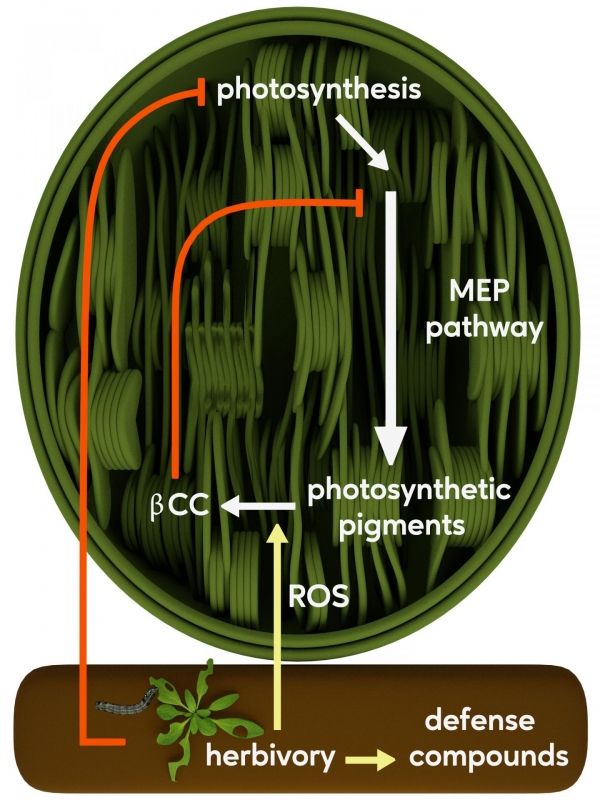In a new study in PNAS, an international team of researchers including scientists from the Max Planck Institute for Chemical Ecology has shown that Arabidopsis thaliana plants produce beta-cyclocitral when attacked by herbivores and that this volatile signal inhibits the methylerythritol 4-phosphate (MEP) pathway. The MEP pathway is instrumental in plant growth processes, such as the production of pigments for photosynthesis. In addition to down-regulating the MEP pathway, beta-cyclocitral also increases plant defenses against herbivores. Since the MEP pathway is only found in plants and microorganisms, but not animals, knowledge of a signal molecule like beta-cyclocitral opens up new possibilities for the development of herbicides or antimicrobial agents that block this pathway (Proceedings of the National Academy of Sciences of the United States of America, March 2021, doi:10.1073/pnas.2008747118).
Trade-offs between defense and growth processes in plants
Researchers have long known that plants have limited resources that they can invest in defense against enemies or in growth and reproduction, depending on their environmental conditions. Many studies have already shown that plants increase their defenses when attacked by insects producing, for example, toxins or inhibitors of digestive enzymes that harm their attackers. However, much less is known about how herbivore attack affects growth processes in the plant. "We wanted to investigate how herbivory might affect photosynthesis and the methylerythritol 4-phosphate (MEP) pathway, a pathway making metabolites for growth that is directly supplied from photosynthesis," says first author Sirsha Mitra, who had started working on this project at the Max Planck Institute and is now an assistant professor at Savitribai Phule Pune University in Pune, India.
Read more at: Max Planck Institute for Chemical Ecology
Feeding by herbivores not only causes plants to produce defense compounds, but also leads to a slowdown in growth processes. Cleavage of beta-carotene (a photosynthetic pigment) via reactive forms of oxygen (ROS = reactive oxygen species), forms beta-cyclocitral (βCC), which directly inhibits the rate-controlling enzyme of the MEP pathway. (Photo Credit: Kimberly Falk, Moves Like Nature)


